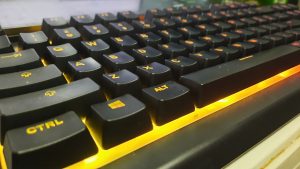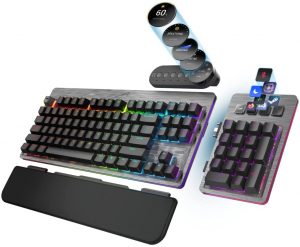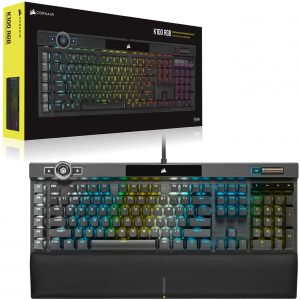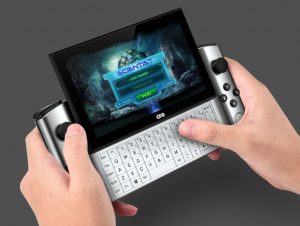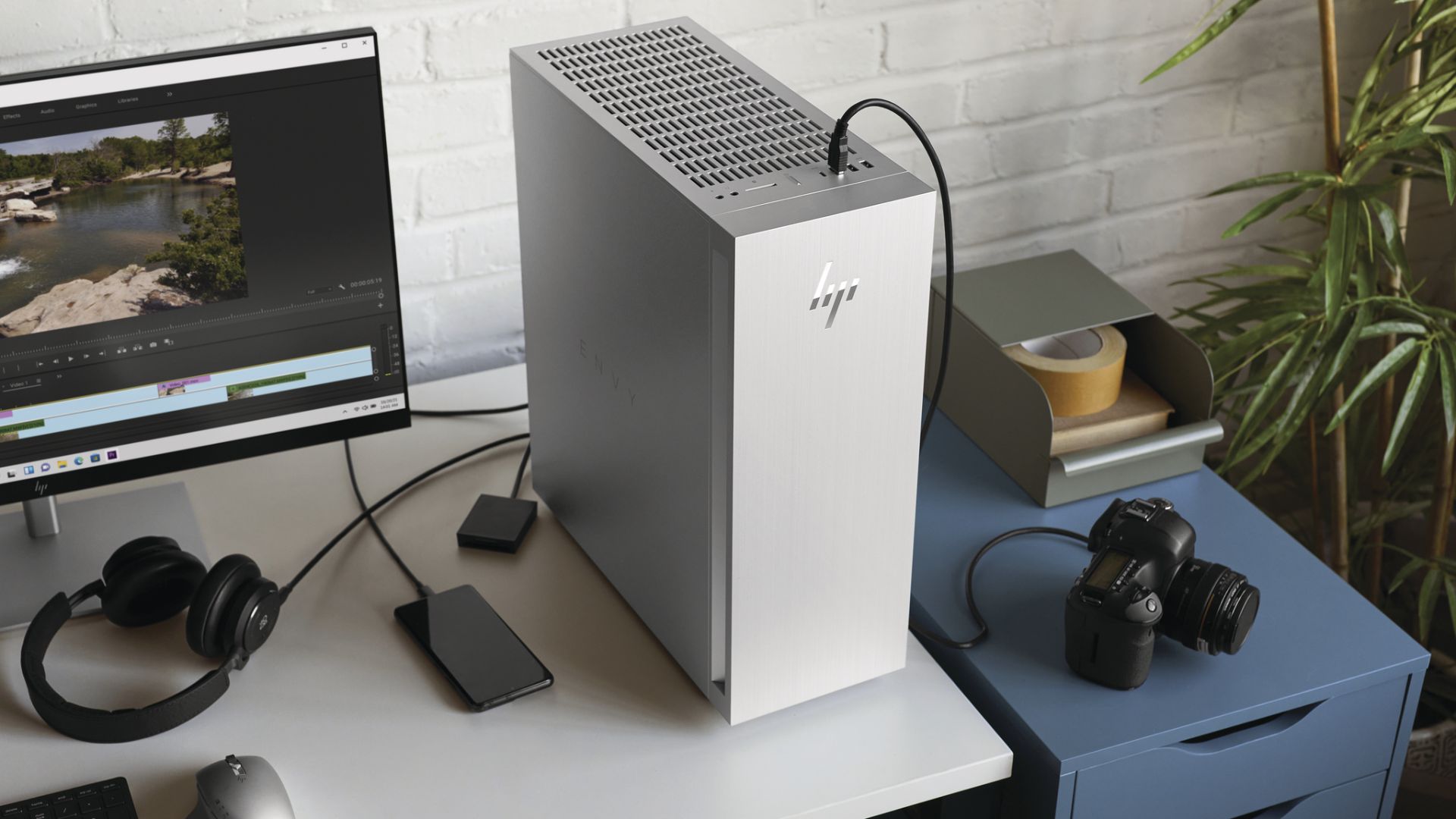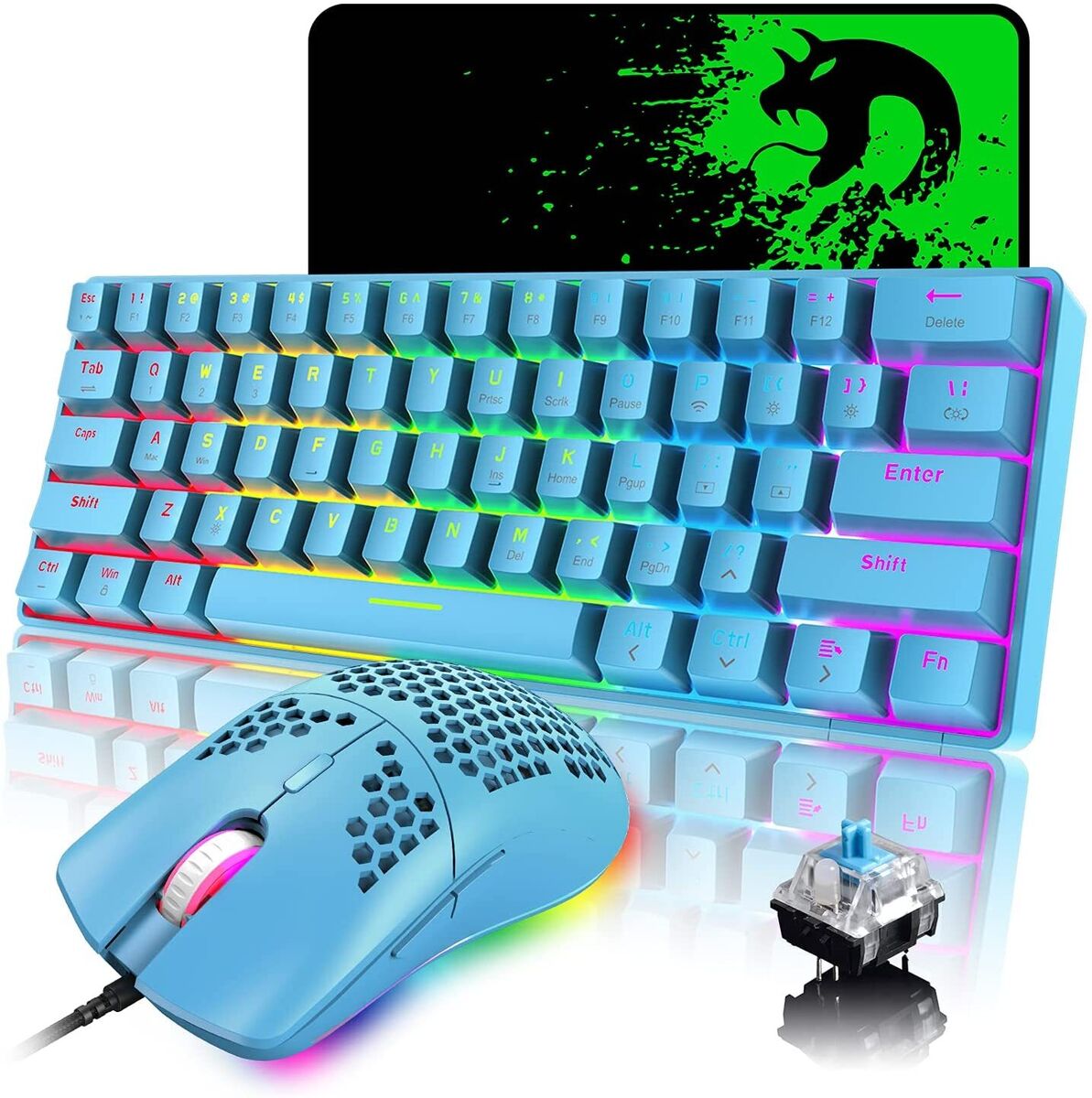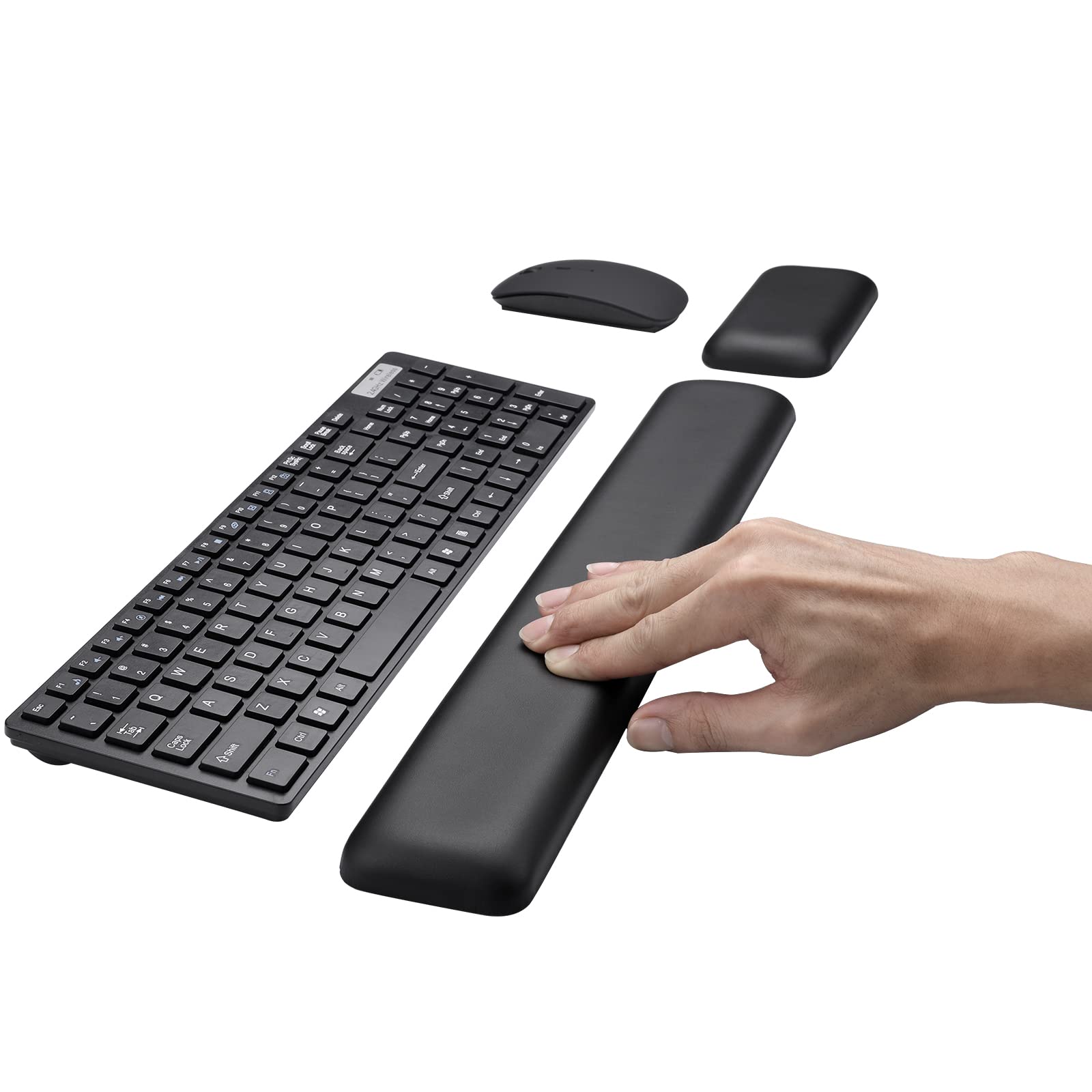Introduction
Gaming keyboards have become an integral part of the gaming experience, offering enhanced functionality and responsiveness for avid gamers. As technology continues to advance, gaming keyboards have evolved to incorporate a wide array of features, from customizable RGB lighting to advanced macro programming. With this surge in capabilities, one might wonder about the power consumption of these high-performance peripherals.
Understanding the power usage of gaming keyboards is crucial, especially for gamers who are conscious of their energy consumption or who rely on battery-powered devices. This article delves into the power consumption of gaming keyboards, shedding light on the factors that influence their energy usage and providing practical tips for minimizing power consumption without compromising the gaming experience.
As we explore the power requirements of gaming keyboards, it's important to note that these peripherals are not only about raw power usage. They are also about delivering a responsive and immersive gaming experience, enhancing the enjoyment and performance of gamers. By understanding the power dynamics of gaming keyboards, users can make informed decisions about their gaming setups and contribute to more sustainable gaming practices.
In the following sections, we will delve into the intricacies of gaming keyboards, examining their power consumption, the factors influencing energy usage, and practical strategies for optimizing power efficiency. Whether you are a casual gamer, a competitive esports enthusiast, or simply someone intrigued by the technology behind gaming peripherals, this article aims to provide valuable insights into the power consumption of gaming keyboards. Let's embark on this journey to uncover the fascinating world of gaming keyboard power dynamics.
What is a Gaming Keyboard?
A gaming keyboard is a specialized keyboard designed to meet the unique demands of gaming, offering features and performance capabilities that surpass those of standard keyboards. These peripherals are engineered to provide gamers with a competitive edge, offering enhanced responsiveness, customizable features, and ergonomic designs tailored to prolonged gaming sessions.
One defining characteristic of gaming keyboards is their advanced key switches, which dictate the tactile feedback, actuation force, and durability of each key press. Mechanical key switches, in particular, are favored for their precise actuation and tactile feedback, allowing gamers to execute commands with exceptional speed and accuracy. These switches are often customizable, catering to the individual preferences of gamers based on their preferred actuation force and typing feel.
Beyond the key switches, gaming keyboards often feature customizable RGB lighting, allowing users to personalize the visual aesthetic of their keyboard to complement their gaming setup. Additionally, many gaming keyboards are equipped with programmable macro keys, enabling users to assign complex sequences of commands or macros to a single keystroke, thereby streamlining gameplay and enhancing efficiency.
Ergonomics also play a pivotal role in gaming keyboard design, with features such as wrist rests, adjustable tilt angles, and durable construction aimed at providing comfort and durability during extended gaming sessions. Anti-ghosting and n-key rollover technology are further enhancements that prevent input conflicts during rapid keystrokes, ensuring that every command is registered accurately, even in the heat of intense gaming scenarios.
Furthermore, gaming keyboards often integrate dedicated media controls, such as volume knobs, playback buttons, and mute keys, allowing gamers to adjust audio settings without disrupting their gameplay. Some high-end gaming keyboards also incorporate integrated displays or touch-sensitive surfaces for supplementary functionality, adding a layer of sophistication to the gaming experience.
By understanding the distinctive features of gaming keyboards, it becomes evident that these peripherals are meticulously crafted to cater to the demanding requirements of gamers. The combination of advanced key switches, customizable features, ergonomic design, and additional functionalities distinguishes gaming keyboards as essential tools for optimizing gaming performance and enhancing the overall gaming experience.
Power Consumption of Gaming Keyboards
When it comes to power consumption, gaming keyboards typically draw minimal power, especially when compared to other gaming peripherals such as high-end gaming mice or powerful gaming PCs. The power usage of a gaming keyboard is primarily influenced by the type of lighting, additional features, and the specific design of the keyboard.
One of the primary contributors to power consumption in gaming keyboards is the RGB lighting. Keyboards equipped with customizable RGB lighting features can consume more power, particularly when set to display vibrant, dynamic lighting effects. However, it’s important to note that many modern gaming keyboards offer energy-efficient lighting options, allowing users to adjust brightness levels and lighting patterns to minimize power usage without sacrificing visual appeal.
Moreover, the inclusion of additional features, such as integrated displays, USB pass-through ports, or audio jacks, can marginally increase the power consumption of gaming keyboards. While these features offer added functionality and convenience, they may contribute to slightly higher power usage compared to standard keyboards.
It’s worth noting that the power consumption of gaming keyboards is generally modest, with most models consuming less than 500mA of current, even with RGB lighting activated. This level of power usage is well within the capacity of USB ports on gaming PCs and laptops, ensuring seamless compatibility without placing undue strain on the system’s power supply.
Furthermore, advancements in keyboard technology have led to the development of energy-efficient key switches that contribute to overall power savings. Mechanical key switches, which are prevalent in gaming keyboards, are renowned for their durability and efficiency, requiring minimal power to register key presses while delivering exceptional tactile feedback and responsiveness.
Overall, while gaming keyboards offer a plethora of features and customization options, their power consumption remains relatively low, making them an energy-efficient choice for gamers seeking high-performance peripherals. By understanding the factors influencing power usage in gaming keyboards, users can make informed decisions when selecting a keyboard that aligns with their preferences while considering power efficiency.
Factors Affecting Power Consumption
The power consumption of gaming keyboards is influenced by several key factors, each of which contributes to the overall energy usage of these peripherals. Understanding these factors is essential for gamers who seek to optimize power efficiency without compromising on the performance and functionality of their gaming keyboards.
- RGB Lighting: Perhaps the most significant factor affecting power consumption in gaming keyboards is the presence of RGB lighting. The vibrant and customizable nature of RGB lighting can significantly impact power usage, especially when set to display dynamic lighting effects. Users can mitigate this by adjusting brightness levels and opting for energy-efficient lighting patterns to minimize power consumption while still enjoying visually appealing illumination.
- Additional Features: Gaming keyboards often incorporate additional features such as integrated displays, USB pass-through ports, audio jacks, and dedicated media controls. While these features enhance functionality, they may contribute to slightly higher power consumption compared to standard keyboards. Gamers should consider the power implications of these features when selecting a gaming keyboard that aligns with their preferences.
- Key Switches: The type of key switches used in gaming keyboards can impact power consumption. Mechanical key switches, renowned for their durability and tactile feedback, are generally more energy-efficient compared to other switch types. Their efficient actuation and minimal power requirements contribute to overall power savings, making them a popular choice among gamers.
- Usage Patterns: The frequency and duration of keyboard usage also play a role in power consumption. Gamers who engage in prolonged gaming sessions may find that their keyboards draw more power over time. However, the overall impact of usage patterns on power consumption is relatively minimal compared to the influence of lighting and additional features.
By considering these factors, gamers can make informed decisions when selecting a gaming keyboard that aligns with their preferences while prioritizing power efficiency. Manufacturers continue to innovate in this space, developing energy-efficient features and technologies to minimize power consumption without compromising the performance and functionality that gamers demand from their keyboards.
Tips for Reducing Power Consumption
For gamers seeking to minimize the power consumption of their gaming keyboards without sacrificing functionality or aesthetics, several practical strategies can be employed to optimize power efficiency. By implementing these tips, gamers can enjoy a sustainable and energy-efficient gaming setup while making the most of their high-performance gaming keyboards.
- Optimize RGB Lighting: Adjusting the RGB lighting settings on gaming keyboards can significantly impact power consumption. Dimming the brightness of the lighting or selecting static color profiles instead of dynamic effects can help conserve power while still allowing users to personalize their gaming setups.
- Utilize Energy-Saving Modes: Many gaming keyboards offer energy-saving modes or sleep settings that automatically dim or turn off the lighting after a period of inactivity. Enabling these features can effectively reduce power consumption during idle times without compromising immediate responsiveness during gaming sessions.
- Customize Lighting Profiles: Creating customized lighting profiles that minimize the use of vibrant colors or intricate lighting effects can contribute to lower power consumption. Users can tailor their lighting configurations to strike a balance between visual appeal and energy efficiency based on their preferences.
- Disable Unnecessary Features: If a gaming keyboard includes additional features such as integrated displays, USB pass-through ports, or audio jacks that are not regularly utilized, disabling these features can help conserve power. By selectively activating only the necessary functions, gamers can reduce power usage without compromising essential functionality.
- Choose Energy-Efficient Key Switches: When selecting a gaming keyboard, opting for models equipped with energy-efficient key switches, such as mechanical switches, can contribute to overall power savings. These switches require minimal power to register key presses while delivering exceptional tactile feedback and responsiveness, making them a sustainable choice for energy-conscious gamers.
- Unplug When Not in Use: When gaming sessions are complete, unplugging the gaming keyboard from the USB port can prevent unnecessary power consumption during periods of inactivity. This simple practice can contribute to energy savings and is especially beneficial for users with multiple peripherals connected to their gaming setups.
By implementing these tips, gamers can actively contribute to energy conservation while optimizing the power efficiency of their gaming keyboards. These practices not only promote sustainable gaming habits but also empower users to make conscious choices that align with their environmental values without compromising the immersive and high-performance gaming experience that gaming keyboards offer.
Conclusion
Gaming keyboards, with their advanced features and customizable functionalities, have established themselves as indispensable tools for gamers seeking optimal performance and immersive gaming experiences. Despite the array of capabilities offered by gaming keyboards, their power consumption remains modest, making them energy-efficient peripherals that align with sustainable gaming practices.
Throughout this exploration of gaming keyboard power consumption, it becomes evident that factors such as RGB lighting, additional features, key switches, and usage patterns play pivotal roles in influencing power usage. By understanding these factors, gamers can make informed decisions when selecting a gaming keyboard that meets their preferences while considering power efficiency.
Furthermore, the tips provided for reducing power consumption empower gamers to actively contribute to energy conservation without compromising the functionality or visual appeal of their gaming keyboards. By optimizing RGB lighting, utilizing energy-saving modes, customizing lighting profiles, and selecting energy-efficient key switches, gamers can create sustainable gaming setups that align with their environmental values.
As technology continues to evolve, gaming keyboard manufacturers are likely to further prioritize energy efficiency in their designs, offering innovative solutions that minimize power consumption without compromising the performance and functionality that gamers demand. This ongoing commitment to sustainability and energy efficiency underscores the industry’s dedication to fostering environmentally conscious gaming practices.
In conclusion, the power consumption of gaming keyboards, while influenced by various factors, remains relatively low, making these peripherals an energy-efficient choice for gamers. By implementing practical strategies to reduce power consumption, gamers can contribute to energy conservation and sustainable gaming habits while fully embracing the immersive and high-performance capabilities of gaming keyboards. Through a harmonious blend of advanced technology and environmental mindfulness, gaming keyboards continue to enrich the gaming experience while aligning with the values of sustainability and energy efficiency.









